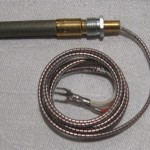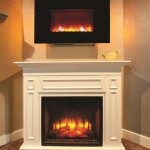Are Ventless Propane Fireplaces Safe?
Ventless propane fireplaces, also known as unvented propane fireplaces, have gained popularity as an alternative heating source and aesthetic addition to homes. Their appeal lies in their ease of installation, absence of chimneys or venting systems, and relatively high heating efficiency. However, questions regarding their safety remain a persistent concern for potential users. Understanding the mechanisms of operation, potential hazards, and safety precautions associated with these appliances is crucial for making informed decisions about their use.
A ventless propane fireplace operates by burning propane fuel directly within the living space. Unlike traditional fireplaces that require a chimney to exhaust combustion byproducts, ventless models are designed to burn fuel completely and release minimal pollutants. They are equipped with oxygen depletion sensors (ODS) and carbon monoxide (CO) detectors, intended as safety features that shut off the gas supply if oxygen levels become too low or carbon monoxide levels rise beyond safe limits. Despite these safety mechanisms, the inherent nature of combustion processes within an enclosed space raises legitimate questions about indoor air quality and the potential for harmful emissions.
The primary combustion byproducts of propane are carbon dioxide (CO2) and water vapor (H2O). However, incomplete combustion can also produce carbon monoxide (CO), a colorless, odorless, and highly toxic gas. Nitrogen dioxide (NO2) can also be produced, although in smaller quantities. Proponents of ventless propane fireplaces argue that modern models are designed for near-complete combustion, minimizing the production of these harmful byproducts. However, even with efficient designs, the complete elimination of these gases is not possible. The safety of these appliances hinges on both the efficiency of combustion and the effectiveness of the safety mechanisms in place to detect and mitigate potential hazards.
Understanding the Potential Risks
The potential risks associated with ventless propane fireplaces are largely related to the accumulation of combustion byproducts within the living space. While CO poisoning is often the most discussed hazard, the accumulation of CO2 and water vapor can also pose problems. It's important to understand these risks to properly evaluate the safety of using ventless propane fireplaces.
Carbon monoxide (CO) is a particular concern because it is a silent killer. It binds to hemoglobin in the blood, preventing the transport of oxygen to vital organs. Symptoms of CO poisoning can range from mild headaches and dizziness to nausea, confusion, and ultimately, death. Even low-level exposure to CO over extended periods can have detrimental health effects. While ODS and CO detectors are designed to prevent CO buildup, their effectiveness depends on proper maintenance and functionality. Regular testing is imperative to ensure that these safety devices are operating as intended.
Elevated levels of carbon dioxide (CO2) can also be problematic. While not as immediately life-threatening as CO, high concentrations of CO2 can cause drowsiness, headaches, and difficulty concentrating. In poorly ventilated spaces, the use of a ventless propane fireplace can contribute to a gradual increase in CO2 levels, potentially affecting the comfort and well-being of occupants. Furthermore, increased CO2 levels can exacerbate existing respiratory conditions such as asthma. The potential impact of CO2 accumulation should be considered, particularly in smaller or poorly ventilated homes.
Another byproduct of propane combustion is water vapor. The introduction of significant amounts of water vapor into the air can raise indoor humidity levels. High humidity can create a favorable environment for mold and mildew growth, which can trigger allergic reactions and respiratory problems, especially in individuals with pre-existing sensitivities. The risk of mold growth is particularly pronounced in homes with poor ventilation or inadequate moisture control measures. The potential for increased humidity levels should be considered, particularly in regions with naturally high humidity.
The Importance of Proper Ventilation and Maintenance
Proper ventilation and regular maintenance are essential for mitigating the risks associated with ventless propane fireplaces. Even with safety features in place, these appliances should not be considered a substitute for adequate ventilation. Regular maintenance ensures the optimal functioning of the fireplace and its safety devices. Failure to maintain the fireplace can significantly increase the risk of encountering problems.
Ventilation is crucial for diluting combustion byproducts and maintaining acceptable indoor air quality. Even with the ODS and CO detection systems, relying solely on these devices is insufficient. Opening windows or using exhaust fans can help to circulate air and prevent the buildup of CO, CO2, and water vapor. The amount of ventilation required will depend on the size of the room, the size of the fireplace, and the duration of operation. A general guideline is to provide at least 50 square inches of free air ventilation per 1,000 BTU/hr of fireplace input. This ventilation should be to the outside. It is crucial to consult the manufacturer's instructions for specific ventilation requirements.
Regular maintenance is also crucial for ensuring the safe and efficient operation of a ventless propane fireplace. This includes cleaning the burner, inspecting the gas lines, and testing the ODS and CO detectors. The burner should be cleaned regularly to remove any soot or debris that can interfere with proper combustion. Gas lines should be inspected for leaks or damage. The ODS and CO detectors should be tested regularly, following the manufacturer's instructions, to ensure that they are functioning correctly. Replacing the batteries in these detectors at least twice a year is essential, similar to smoke detectors. Professional servicing by a qualified technician is also recommended on an annual basis. They will be able to inspect all components of the fireplace, ensure the burner is clean, and check the gas pressure to make sure it is operating correctly.
Regulatory Standards and Safety Certifications
Regulatory standards and safety certifications play a vital role in ensuring the safety of ventless propane fireplaces. These standards and certifications are designed to ensure that the appliances meet certain safety requirements and performance standards. Consumers should only purchase and use ventless propane fireplaces that have been certified by a recognized testing laboratory. These certifications helps to ensure that the design, manufacturing and testing of the propane fireplace meets industry standards for safety and efficiency.
In the United States, ventless propane fireplaces must meet safety standards set by the American National Standards Institute (ANSI). ANSI standards cover a wide range of aspects, including the design, construction, and performance of the fireplaces. They specify requirements for combustion efficiency, emissions, and safety devices. Fireplaces that meet these standards are typically certified by a third-party testing laboratory, such as Underwriters Laboratories (UL) or CSA International. Look for appliances that bear the UL or CSA mark to ensure that they have been tested and certified to meet ANSI standards.
These certifications also ensure that the fireplace is equipped with the necessary safety features, such as the ODS and CO detectors. They also specify requirements for the installation and use of the fireplaces. It is important to follow all of the manufacturer's instructions and local building codes when installing and using a ventless propane fireplace. Improper installation or use can increase the risk of fire, explosion, or carbon monoxide poisoning. Furthermore, some states and municipalities have regulations restricting or prohibiting the use of ventless propane fireplaces. It is crucial to check local building codes and regulations before purchasing and installing one.
Moreover, consumers should be aware of counterfeit or uncertified products. These products may not meet the required safety standards and can pose a significant risk. Purchasing from reputable retailers and verifying the certification mark are essential steps in ensuring the safety of ventless propane fireplaces. Regular inspection of the fireplace and its components, along with adherence to the manufacturer's guidelines, are crucial for maintaining a safe home environment. Ensuring the appliances are up to code and certified by a recognized testing laboratory are important considerations.

Are Vent Free Gas Fireplaces Safe Ventless
.aspx?strip=all)
Ventless Fireplaces Explained Safety Of Vent Free Fires
:max_bytes(150000):strip_icc()/ventless-gas-fireplaces-4160746-hero-f9d4bdcd9bd446eb84406de306f790ba.jpg?strip=all)
How To Pick Out A Ventless Gas Fireplace

Considering A Ventless Gas Fireplace Here S What You Need To Know Bob Vila

Ventless Gas Fireplace Propane

The Debate Continues Are Ventless Fireplaces Safe

Considering A Ventless Gas Fireplace Here S What You Need To Know Bob Vila

Vented Vs Ventless Gas Logs What S The Difference

Ventless Gas Fireplace Is It Safe

Ventless Gas Fireplaces How Safe Are They Really Earlyexperts








